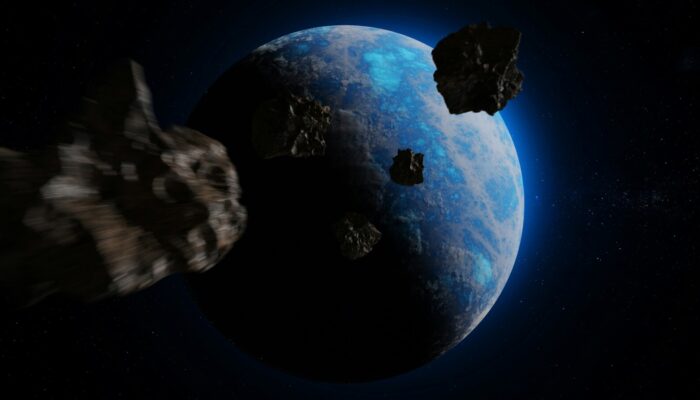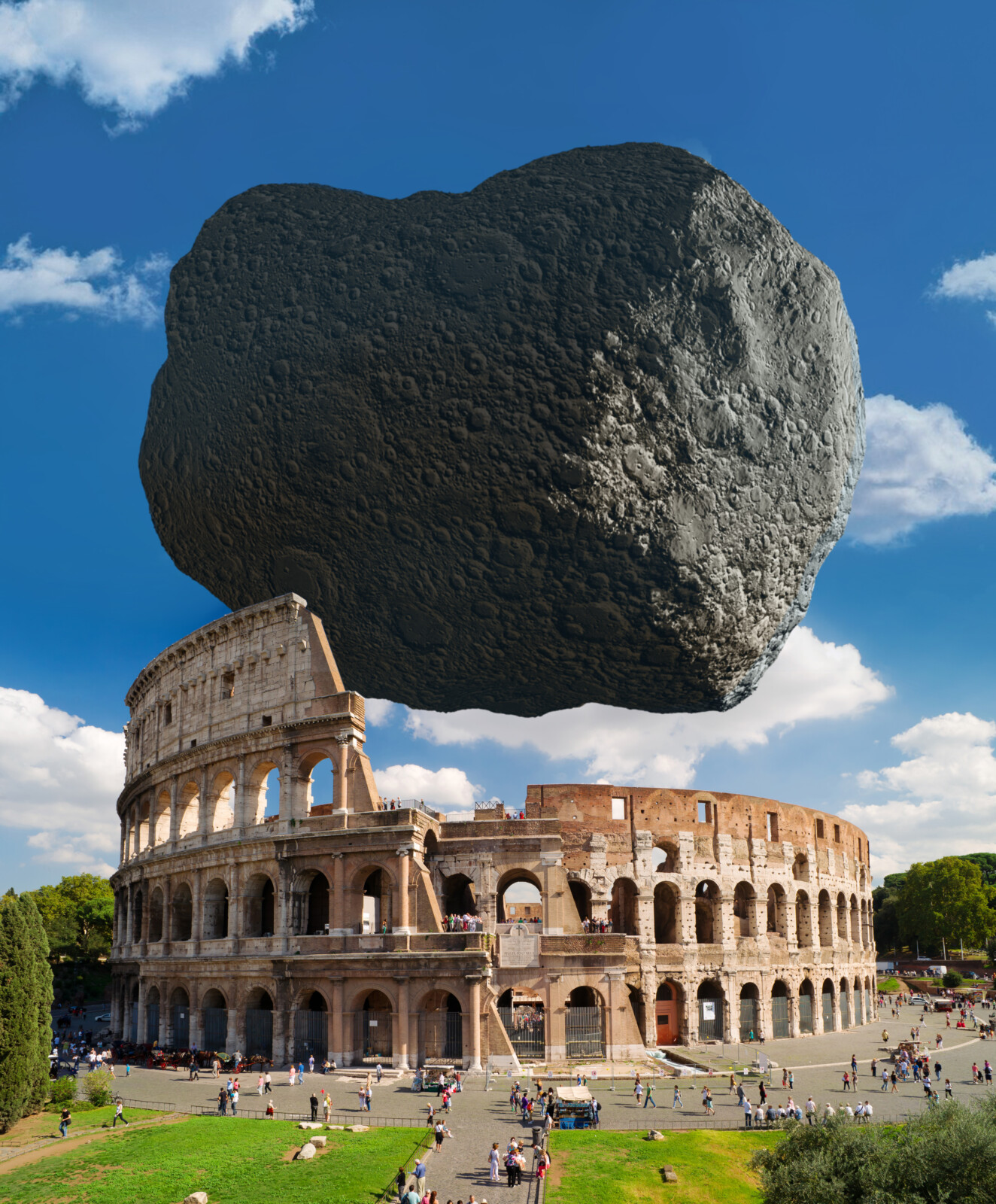
And what if we could prevent a catastrophe as old as the dinosaurs?… As Hera’s mission launched last month, this blog post aims to give you insights into this mission and why it matters. Continue reading and find out!
One of humans’ biggest rebellious acts against insignificance is staring at the sky and wondering what else is out there, then thinking “We can definitely find out!”. Our desire to understand the universe is, at its core, an expression of our longing for connection. It’s a profound yearning to bridge a long-existing gap between what lies beyond the reach of our senses and what resides within us. Our attempts to decode the cosmos does not stem solely from our curiosity to explore distant galaxies or probe the nature of dark matter: we are reaching out to understand our own existence! And therefore, ensuring the survival of our species and our planet stands at the forefront of our efforts to understanding the universe. So imagine spotting a massive asteroid on a collision course with Earth and having the tools to nudge it off its deadly trajectory. It’s not science fiction—it’s the bold vision behind the European Space Agency’s (ESA) Hera mission. But Hera isn’t just about safeguarding Earth; it’s also about exploring cosmic mysteries and testing cutting-edge technology in our ever-expanding universe.
The Didymos system
Hera’s adventure begins with the Didymos system, a pair of near-Earth asteroids unlike any we’ve studied before. The main asteroid, Didymos, is about 780 meters across—roughly the height of the Burj Khalifa—while its smaller companion, Dimorphos, measures 160 meters, making it comparable to the Great Pyramid of Giza.
By the time Hera arrives in 2026, Dimorphos will already have its place in history as the first celestial body to have its orbit altered by human intervention. This milestone came courtesy of NASA’s Double Asteroid Redirection Test (DART) mission in 2022, which intentionally collided with Dimorphos to test a planetary defence technique called kinetic impact. But DART left lingering questions: What’s the precise size of the impact crater? How much momentum was transferred to Dimorphos? What lies beneath its rocky surface? Hera is poised to answer these questions and more!

Photo by ESA-Science Office
What makes Hera special?
Asteroids have long been a part of Earth’s story, yet sometimes, they come with catastrophic consequences. The asteroid impact that ended the age of dinosaurs 65 million years ago serves as a stark reminder of these celestial threats. The question isn’t if another asteroid will strike Earth—it’s when. To safeguard our planet, global space agencies have united in an unprecedented effort to develop planetary defence strategies.
The Hera mission is a vital part of this endeavour. In 2022, NASA’s DART spacecraft collided with Dimorphos, a moonlet of the binary asteroid system Didymos, and managed to alter its orbit. While the mission confirmed that humanity could deflect an asteroid, it also raised new questions:
- How effective was the impact in redistributing momentum?
- What do we still need to learn about asteroid composition and structure to refine this technique?
Hera, launched on October 7, 2024, is designed to answer these questions. By arriving at the Didymos system in late 2026, the spacecraft will conduct a detailed investigation of Dimorphos, studying its mass, structure, and the crater left by DART’s impact.
Hera’s onboard technologies include:
- Milani CubeSat, which will map Dimorphos’s surface composition and provide high-resolution imaging.
- Juventas CubeSat, a radar capable of peering inside the asteroid to understand its density and internal makeup—a first in space exploration.
These technologies will transform our understanding of asteroids by refining the kinetic impact method, to make sure it can be reliably used to protect Earth if the need arises.
Fun facts about asteroids
- Asteroids can have moons: The Didymos system, where Hera is headed, is a perfect example. Its smaller moon, Dimorphos, is an asteroid orbiting a larger asteroid, Didymos.
- Rich in resources: Some asteroids contain precious metals like platinum and gold, which makes them potential targets for future space mining.
- Building blocks of life: Asteroids may have delivered water and organic molecules to Earth billions of years ago.
From space to your screen: Democratising knowledge
Hera isn’t just a mission for scientists; it’s an experience open and accessible to general audiences as well! An AI-powered assistant, known as the Hera Space Companion, allows users to interact with the mission in real-time. Want to know how Hera’s instruments work or the latest data from Dimorphos? Try it here!
This platform offers unprecedented access to Hera’s discoveries and turns a distant mission millions of kilometres away into a shared global experience.
“Hera represents a new form of science communication. It brings the fascination of space travel directly to people and turns access to science into a shared experience that everyone can understand.”
says Markus Mooslechner, concept developer and producer at Terra Mater Studios.
A glimpse into the future
Hera’s contributions extend beyond planetary defence. Its technologies and methodologies could inspire future missions, from studying distant celestial bodies to enhancing Earth observation. By making science accessible, Hera demonstrates the power of innovation to unite humanity in a shared quest for knowledge.
As Hera embarks on its journey to the Didymos system, it carries the hopes of Earth’s defenders, the dreams of curious minds, and the determination of humanity to rise to cosmic challenges. With every manoeuvre and every discovery, Hera reaffirms our commitment to protecting our planet and exploring the vast, awe-inspiring universe beyond.
The stars are no longer just a distant wonder—they are our destination!
Want to learn more about Hera’s planetary defence mission? Check out Hera’s launch kit.



